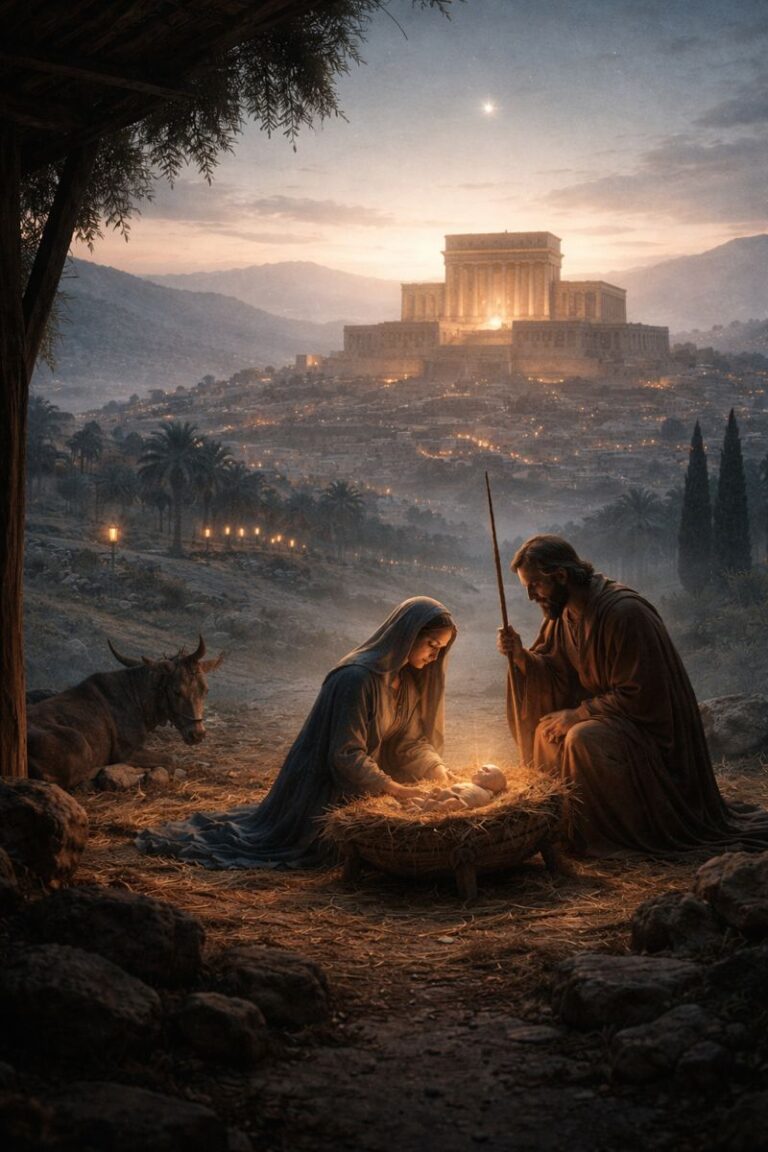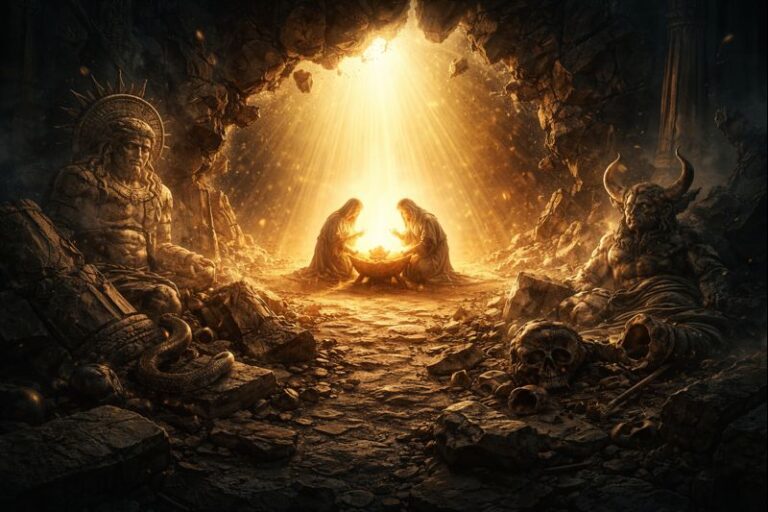
Alexander Hislop’s The Two Babylons has long held sway in certain evangelical and fundamentalist circles. Its central claim—that Roman Catholicism is a disguised continuation of ancient Babylonian paganism—has influenced generations of Christians suspicious of the Catholic Church. Hislop argues that practices and symbols within Catholicism were derived from ancient worship of figures like Nimrod and Semiramis. Yet as modern scholarship has consistently demonstrated, these claims collapse under scrutiny. This article examines why Hislop’s theories are deeply flawed, historically inaccurate, and ultimately harmful.
A Foundation of Faulty Methodology
From the outset, Hislop’s work suffers from methodological failure. Rather than employing credible historical sources, linguistic analysis, or archaeological evidence, Hislop leans heavily on speculation and forced connections. He draws parallels based on little more than superficial similarity—treating visual resemblance or name echoes as definitive proof of religious continuity.
A striking example is Hislop’s attempt to link the Virgin Mary with the Babylonian figure Semiramis. Rather than relying on historical context or primary sources, he builds his case on tenuous similarities and conjecture. This pattern repeats throughout the book. Hislop’s conclusions are based on circular reasoning, and his work lacks the kind of critical evaluation expected in even the most basic academic research.
Inventing the Nimrod-Semiramis Narrative
At the core of Hislop’s argument is the narrative that Nimrod and Semiramis served as the original model for all pagan deities and that this archetype was smuggled into Christianity. According to Hislop, the Catholic portrayal of Mary and Jesus as a mother and child pair is simply a continuation of Babylonian goddess worship.
This idea, however, has no basis in historical fact. There is no ancient evidence linking Nimrod, a biblical figure mentioned briefly in Genesis, to Semiramis, who appears centuries later in Assyrian and Greco-Roman sources. Semiramis is never presented as Nimrod’s wife in any ancient record. Nor is she depicted as a fertility goddess or a “Queen of Heaven” in a context that would support Hislop’s claims. Instead, she is often described as a powerful queen or military leader, not a religious figure. The pairing of Nimrod and Semiramis is entirely Hislop’s invention.
Furthermore, Nimrod himself is not attested in any ancient Mesopotamian inscriptions as a god, cult figure, or object of worship. Hislop’s claim that Nimrod became the prototype for gods such as Osiris, Zeus, or Baal is another example of his flawed approach. These figures arise from vastly different cultures and time periods. While some religious themes are common across civilizations, this does not imply that all traditions share a single origin—especially not one so poorly attested as Hislop’s theory.
A Narrative Built on Speculation
Throughout The Two Babylons, Hislop treats symbolism as if it were conclusive evidence. If one religion uses a symbol and another uses a similar one, he assumes a direct connection without regard for chronology, culture, or meaning. This assumption, that similarity equals origin, is both academically irresponsible and logically unsound.
The reality is that mother-and-child motifs appear across many ancient societies, not because they all borrowed from Babylon, but because motherhood and infancy are universal human experiences. To assume that such symbols indicate historical borrowing is to engage in what scholars have called “parallelomania”—the tendency to draw connections between unrelated things based solely on superficial resemblance.
No Scholarly Support—Then or Now
Even in Hislop’s own time, The Two Babylons failed to gain serious recognition among historians or theologians. It was never peer-reviewed, and Hislop’s research practices did not meet the standards of historical inquiry, even by 19th-century measures. Today, his book is almost universally disregarded by scholars across disciplines, not because of any bias, but because it simply does not hold up under critical examination.
Modern historians and archaeologists who specialize in the ancient Near East, early Christianity, or comparative religion never cite Hislop’s work, except to point out its failings. His theories are not built on credible primary sources, and his interpretations reflect personal bias far more than scholarly rigor.
One of the most notable repudiations of Hislop’s work came from Ralph Woodrow. Once a strong supporter of The Two Babylons, Woodrow initially wrote his own book echoing Hislop’s claims. However, after reviewing the evidence for himself, Woodrow publicly withdrew his earlier work and replaced it with The Babylon Connection?, a detailed and honest refutation of Hislop’s theories. That level of intellectual integrity stands in stark contrast to the approach Hislop modeled.
Anti-Catholic Bias and Its Consequences
Hislop’s purpose was not to provide an objective history of religion, but to undermine the Catholic Church. This anti-Catholic bias pervades every chapter of The Two Babylons, distorting his interpretations and fueling a narrative that sees paganism behind every aspect of Catholic liturgy.
This polemical intent not only discredits the work academically, but has also had long-term consequences for Christian unity. Hislop’s theories have contributed to division, mistrust, and suspicion between Christian communities. In many cases, his arguments have been uncritically adopted by those predisposed to anti-Catholic sentiment, reinforcing hostility instead of understanding.
Modern Scholarship and Archaeology Have Moved On
Since Hislop’s time, the fields of archaeology, ancient history, and biblical studies have undergone profound advances. Archaeological discoveries, textual analysis, and cross-cultural studies have clarified the development of Christian doctrine and worship practices. These advances have thoroughly disproven Hislop’s thesis.
Symbols used by Christians, such as the cross, have distinct origins within the Christian tradition and were not borrowed from Babylonian religion. While the development of Mariology within the Catholic Church is itself the subject of theological debate, what can be said with confidence is that it did not arise from the repackaging of pagan goddess worship as Hislop claimed. His assertions ignore the actual development of doctrine and practice in the early Church. Furthermore, early Christians were often martyred for refusing to engage in pagan practices—not for blending them into their worship—which directly contradicts Hislop’s core narrative.
Hislop’s idea of a secret pagan origin hidden within the Church is simply not supported by the evidence. Modern research, drawing on both textual and archaeological sources, paints a much more accurate and nuanced picture.
Conclusion
The Two Babylons may have appealed to readers in an age with less access to historical data, but it cannot stand in the face of modern evidence and serious scholarship. Hislop’s work is not historical research. It is a false polemic, driven by bias and constructed through conjecture.
Christians seeking to understand church history should avoid relying on this deeply flawed source. Instead, they should turn to reliable, evidence-based scholarship that respects the complexity of history and the integrity of the Christian tradition. Continuing to promote Hislop’s claims only serves to spread misinformation and foster needless division.
Discussion Questions
- What are the dangers of using unfounded symbolic connections in forming theological conclusions?
- How has The Two Babylons shaped Protestant views of Catholicism, and what steps can be taken to heal divisions rooted in misinformation?
- Why is it important to distinguish between speculation and historical evidence in religious discourse?
- What role does bias play in shaping historical narratives, and how can it be identified?
- How should Christians respond to popular but discredited theories that remain influential in some circles?
Want to Know More?
- Ralph Woodrow, The Babylon Connection? – A former supporter of Hislop’s views, Woodrow provides a thorough refutation of The Two Babylons, exposing its speculative claims and replacing them with historically grounded analysis.
- Robert E. Winn, Christianity in the Roman Empire – This book outlines the development of Christian beliefs and practices within their actual historical context, without resorting to conspiracy theories.
- Paul Kriwaczek, Babylon: Mesopotamia and the Birth of Civilization – A well-researched history of Babylon and its religion, offering an accurate view of Babylonian culture without Hislop’s speculative connections.
- J.N.D. Kelly, Early Christian Doctrines – A classic academic study on the theological development of early Christianity, grounded in primary sources and historical context.
- Ronald H. Nash, The Gospel and the Greeks: Did the New Testament Borrow from Pagan Thought? – Refutes the idea that Christianity borrowed from pagan religions. Nash exposes the flaws in parallel-based arguments like Hislop’s and shows that Christian doctrine is rooted in Jewish thought, not Babylonian or Greco-Roman mythology.




